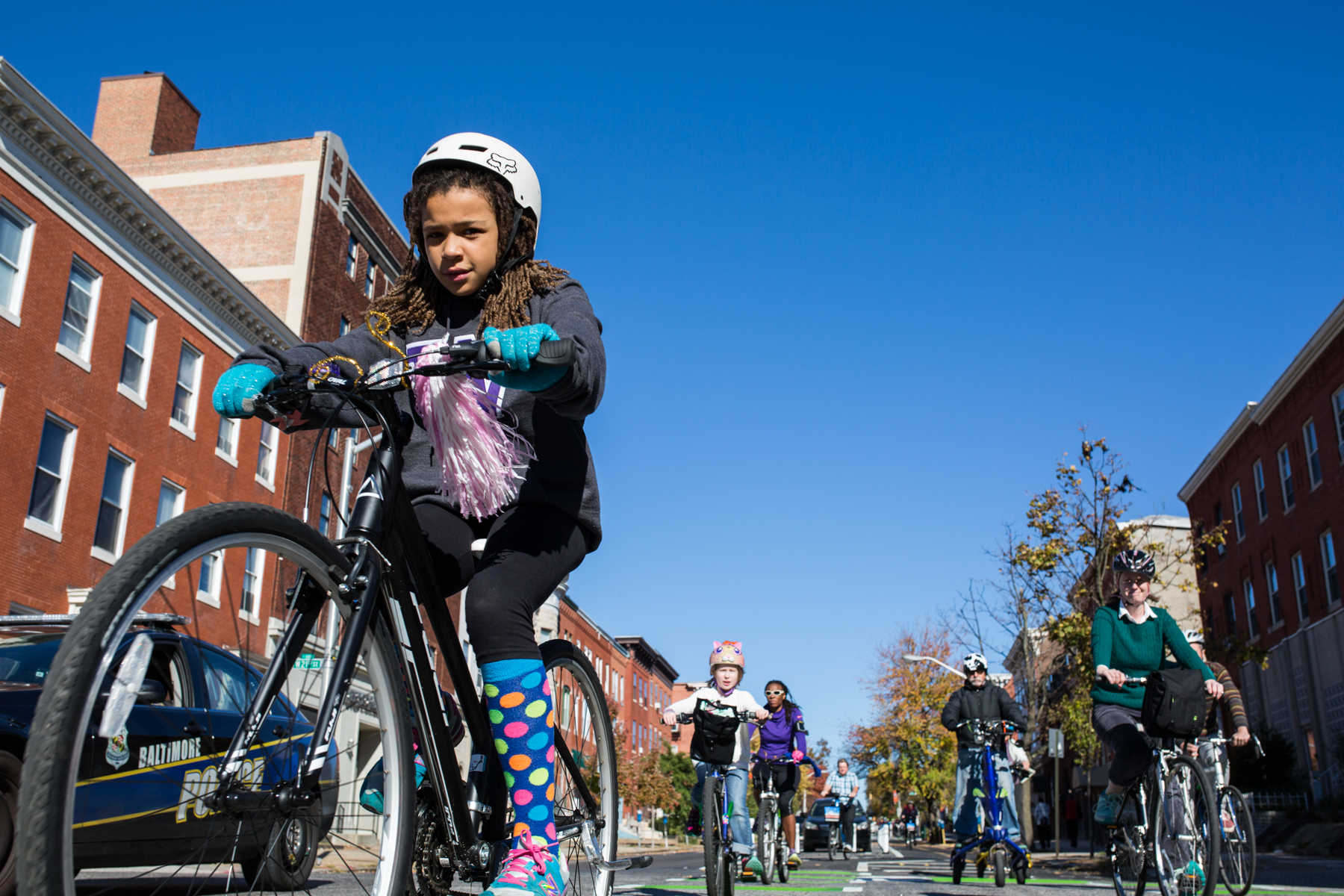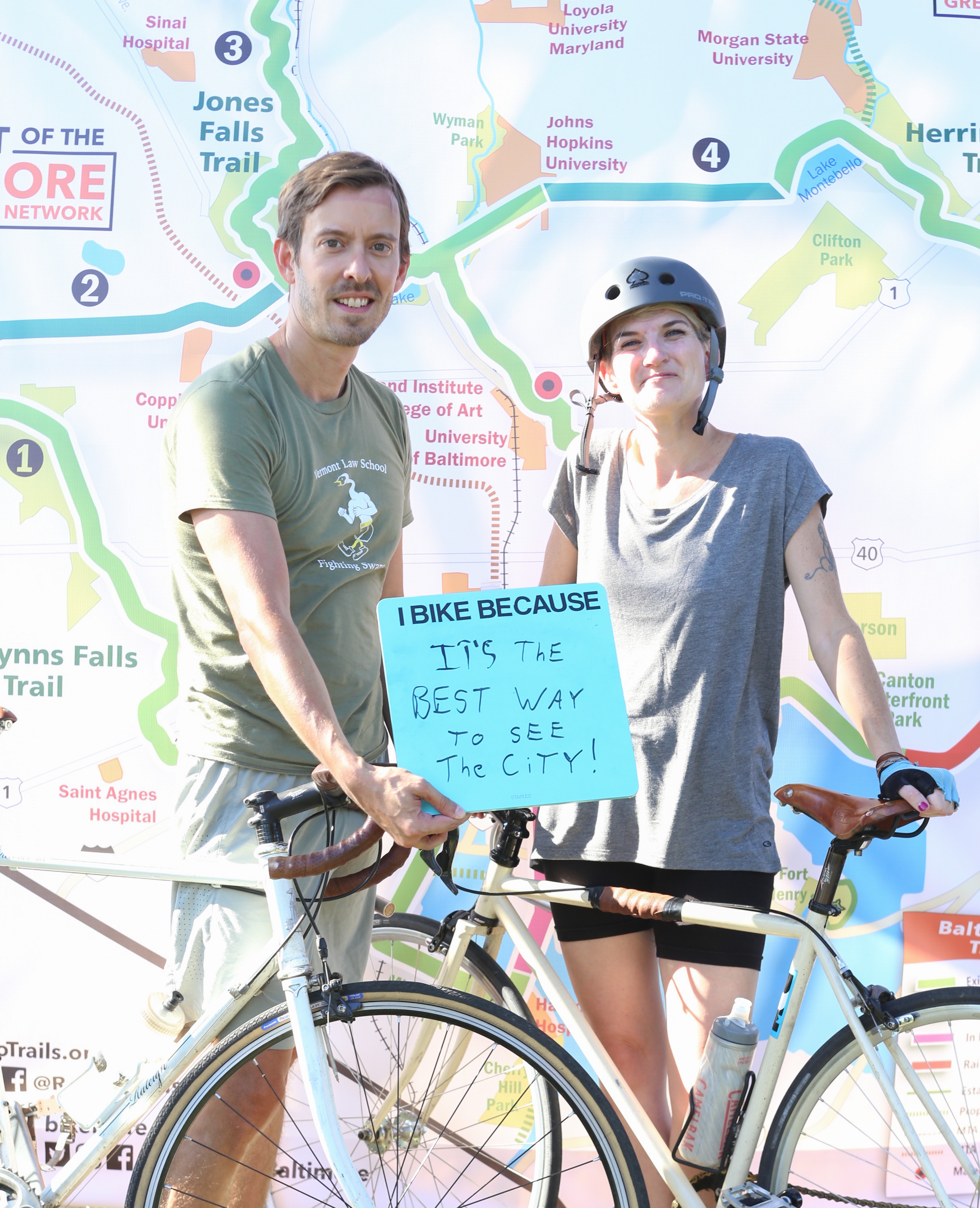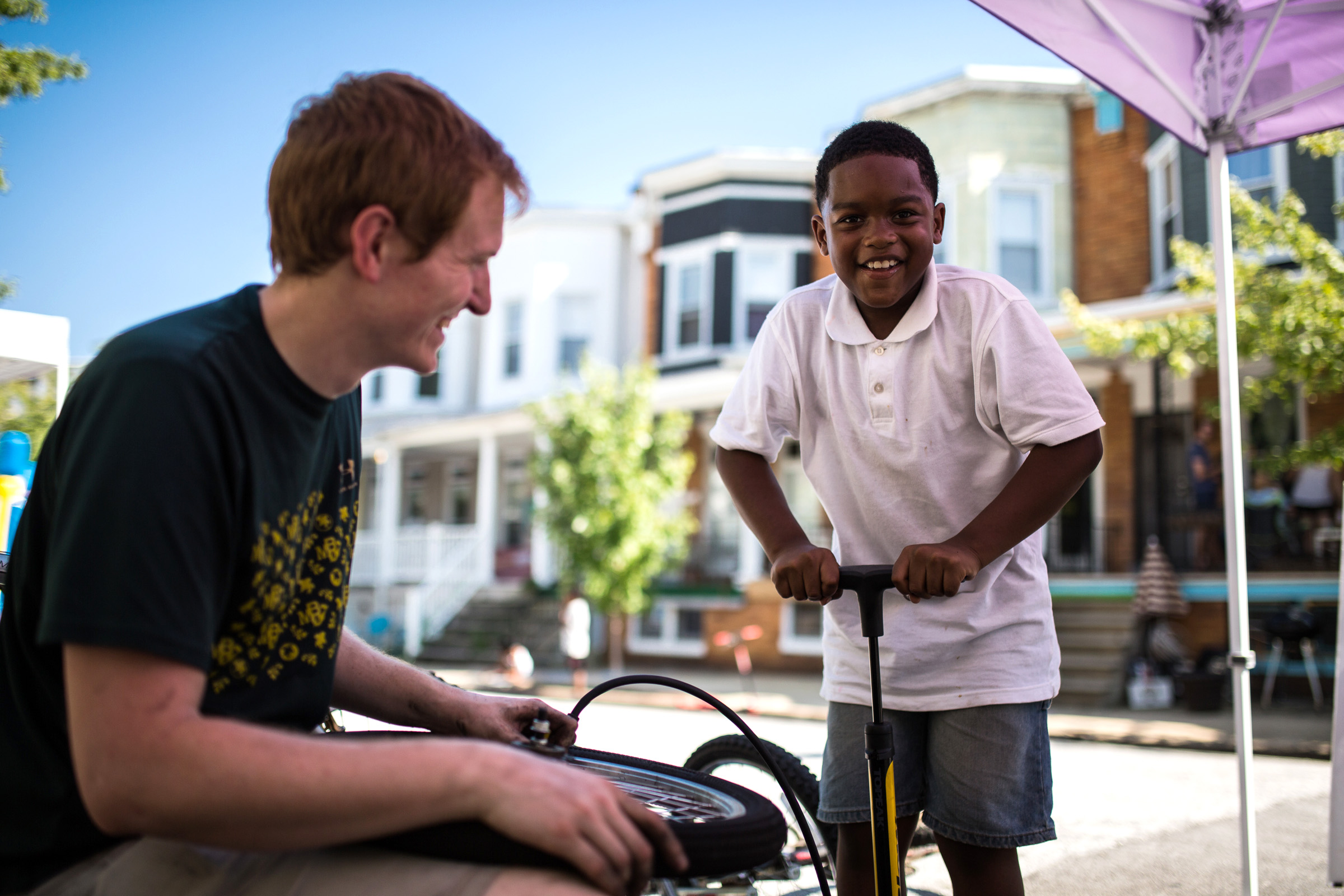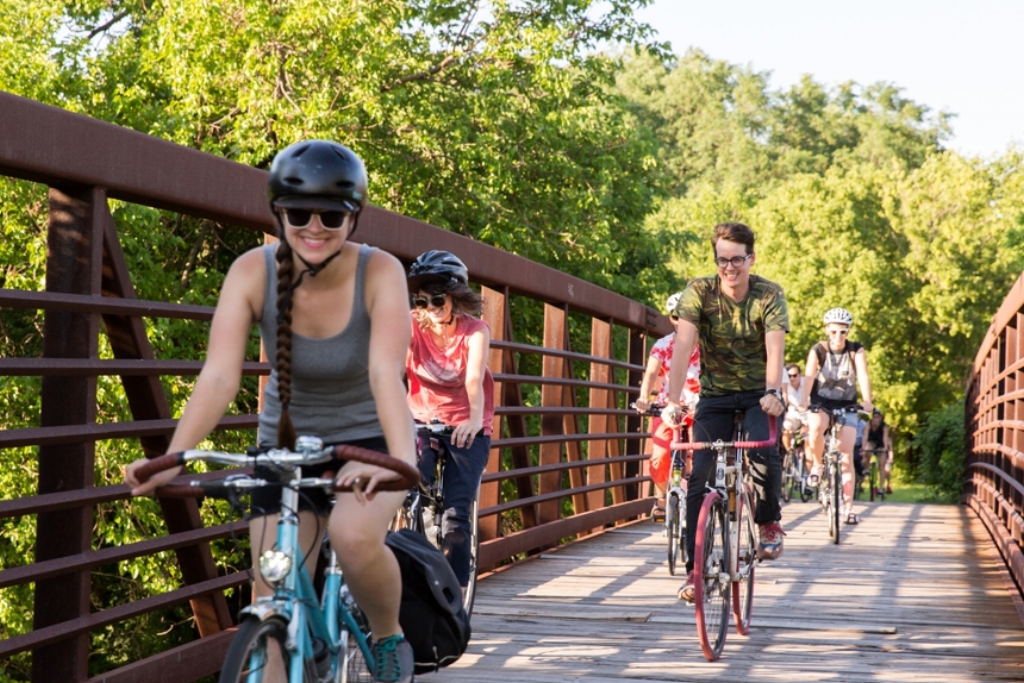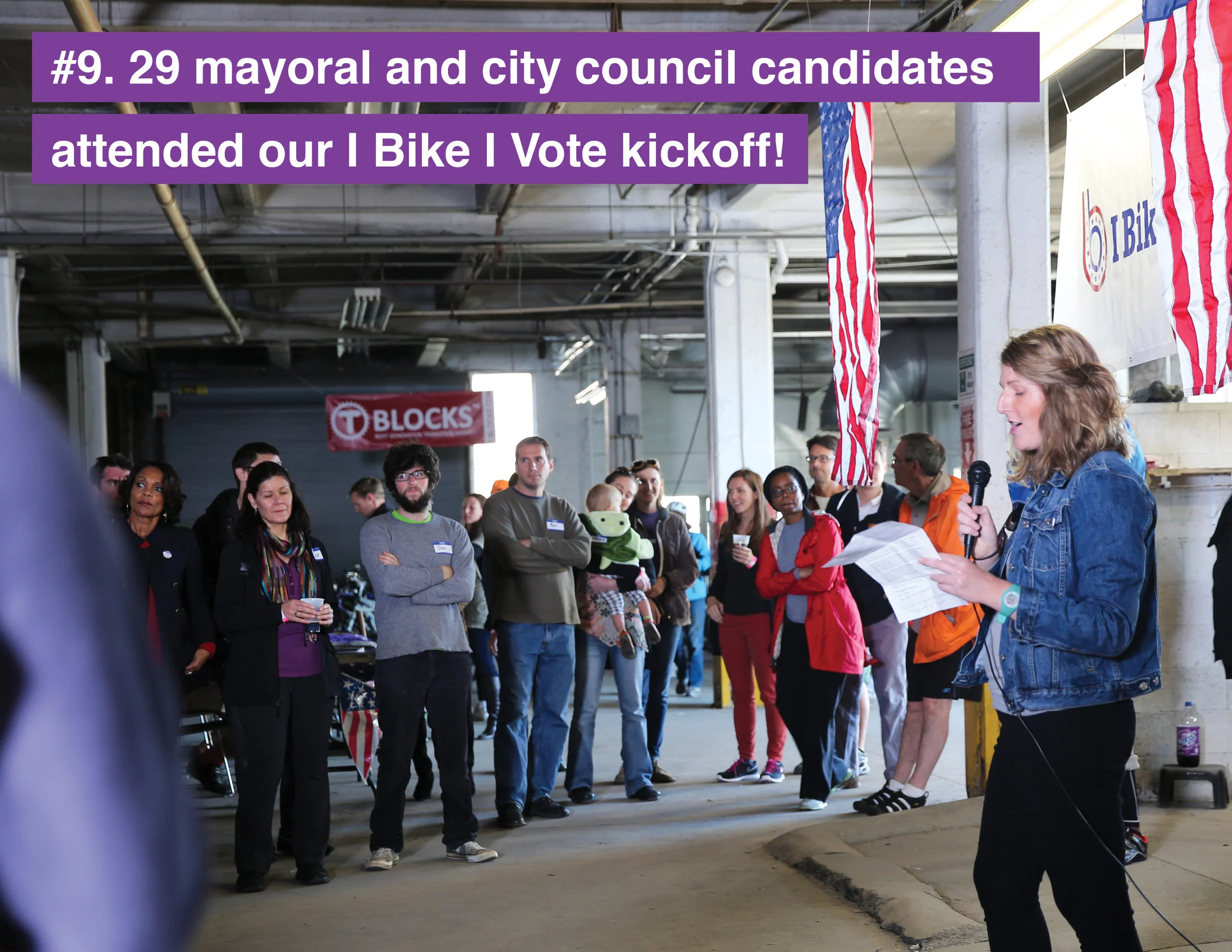by Liz Cornish, Executive Director
As Bikemore staff is off spending this week with our loved ones, I wanted to take some time to personally say thank you for helping us build a force for biking this year. In Bikemore’s short history, 2016 will be remembered as the year we tipped the scales and truly began to change how people think about streets, public space, and of course — riding bikes in Baltimore.
None of our achievements would have been possible without the immense support of people like you. Our donors, our volunteers, our constituents — who showed up to public meetings in full force, who made our events grow, and helped set our organization on a course for financial sustainability — you are the reason we are here, getting to do this work. It really is the best gift I’ve ever received.
This year we saw the construction of Baltimore’s first protected bike lanes; we launched bike share; we elected a City Council and a Mayor who are invested in Complete Streets; and this past week the Mayor heard the plea from our #DirectDOT campaign and launched a nationwide search for our next Director of the Department of Transportation.
One of the things I am most proud of is our ability to hire two new staff this year, growing our organization from just one person to three. I am incredibly lucky to be able to lead such a talented and dedicated team. Danielle and Jed have taken our operations and our advocacy to the new heights, and I can’t wait to see where they take us in 2017.
It’s customary for nonprofits to make one last appeal of the year. And if it makes sense for you to give, I can tell you we have a real need, and a specific plan to put your generosity to good use.
This next year we will:
Work with Councilman Dorsey to introduce new and improved Complete Streets legislation — ensuring every neighborhood has the opportunity to receive the benefits of streets designed for people over cars.
Train neighborhood activists on transportation and land use policy — making sure the grassroots folks who make our city great have the resources they need to continue to strengthen their neighborhoods.
Continue to monitor capital improvement projects like the Downtown Bike Network and Mount Royal Improvement Project to ensure safe design and swift implementation.
Advance our Baltimore Greenway Trails Coalition to continue to bring resources and support to our vision of a 30 mile continuous trail network for Baltimore.
Develop more programs to bring our members together, to strengthen our movement, and build IRL ("in real life") relationships with the people who keep our mission going.
And for my staff, I want to grow our organization’s financial security so that we can provide quality health benefits to ensure that working for Bikemore makes sense for them long term.
I hope no matter how you celebrate, that this week brings you equal parts rest, reflection and holiday cheer. Thank you for making this year our best yet, and for your sustained support to ensure our work can continue long into the future.



